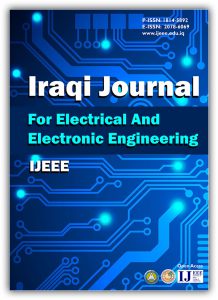
June 2008
<Previous Issue Next Issue>
| Semi-Empirical Models for the Variation of Soil Complex Permittivity with Depth |
| Jawad K. Ali, Adil H. Ahmad |
| Pages: 26-32 |
| FULL TEXT (PDF) |
| Abstract: |
|
In this paper new semi-empirical formulas are developed to evaluate the variation of both real and imaginary parts of soil complex permittivity with depth inside the earth’s surface. Computed values using these models show good agreement with published measured values for soils of the same textures and same frequency band. Use of these models may serve to handle more accurate results especially in the ground probing radar (GPR) applications and other applications relating the detection of buried objects inside the earth’s surface, where the use of a single average value of the soil complex permittivity had not necessarily led, for most of the times, to accurate results for the electromagnetic fields propagated inside the earth’s surface. |
| Partially Host-Adaptive Quantization Index Modulation Watermarking in a Baseband-Spread Transformation Domain |
| Ali E. Hameed |
| Pages: 33-43 |
| FULL TEXT (PDF) |
| Abstract: |
|
In order to reduce the impact of watermark embedding on the perceptual fidelity of the marked signal, watermarking systems process the generated watermark to match it to the local properties of the underlying host signal prior to embedding. However, this adaptation process could distort the watermark, affecting its robustness and information content. In this paper, a new watermark coding technique is proposed, that enables the application of some marknondistorting host-adaptation processing, where the intensity of the watermark could be redistributed according to the local properties of the underlying host without changing the way of interpreting the watermark to be embedded. This completely eliminates the need to equalize adaptation distortions prior to decoding, and hence, to pass any side information about the adaptation processing to the decoder, too. |
| Theoretical Model for Heterojunction phototransistor in Optoelectronic Switch Configurations Part I: Optical Gain Characteristics | ||||||
| F. R. Tahir, R. S. Fyath | ||||||
| Pages: 44-53 | ||||||
| FULL TEXT (PDF) | ||||||
|
||||||
| Transient Response of Multiquantum Well Vertical-Gravity Surface Emitting Lasers | ||||||
| R. S. Fyath, S M. Falh, F. R. Tahir | ||||||
| Pages: 64-76 | ||||||
| FULL TEXT (PDF) | ||||||
| BRAIN MACHINE INTERFACE: ANALYSIS OF SEGMENTED EEG SIGNAL CLASSIFICATION USING SHORT-TIME PCA AND RECURRENT NEURAL NETWORKS |
| Hema C.R., Paulraj M.P., Nagarajan R., Sazali Yaacob, Abdul Hamid Adom |
| Pages: 77-85 |
| FULL TEXT (PDF) |
| Abstract: |
|
Brain machine interface provides a communication channel between the human brain and an external device. Brain interfaces are studied to provide rehabilitation to patients with neurodegenerative diseases; such patients loose all communication pathways except for their sensory and cognitive functions. One of the possible rehabilitation methods for these patients is to provide a brain machine interface (BMI) for communication; the BMI uses the electrical activity of the brain detected by scalp EEG electrodes. Classification of EEG signals extracted during mental tasks is a technique for designing a BMI. In this paper a BMI design using five mental tasks from two subjects were studied, a combination of two tasks is studied per subject. An Elman recurrent neural network is proposed for classification of EEG signals. Two feature extraction algorithms using overlapped and non overlapped signal segments are analyzed. Principal component analysis is used for extracting features from the EEG signal segments. Classification performance of overlapping EEG signal segments is observed to be better in terms of average classification with a range of 78.5% to 100%, while the non overlapping EEG signal segments show better classification in terms of maximum classifications. |
| ECG SIGNAL RECOGNITION BASED ON WAVELET TRANSFORM USING NEURAL NETWORKS AND FUZZY SYSTEMS |
| HAIDER MEHDI ABDUL-RIDHA, ABDULADHEM A. ALI |
| Pages: 86-91 |
| FULL TEXT (PDF) |
| Abstract: |
|
This work presents aneural and fuzzy based ECG signal recognition system based on wavelet transform. The suitable coefficients that can be used as a feature for each fuzzy network or neural network is found using a proposed best basis technique. Using the proposed best bases reduces the dimension of the input vector and hence reduces the complexity of the classifier. The fuzzy network and the neural network parameters are learned using back propagation algorithm. |